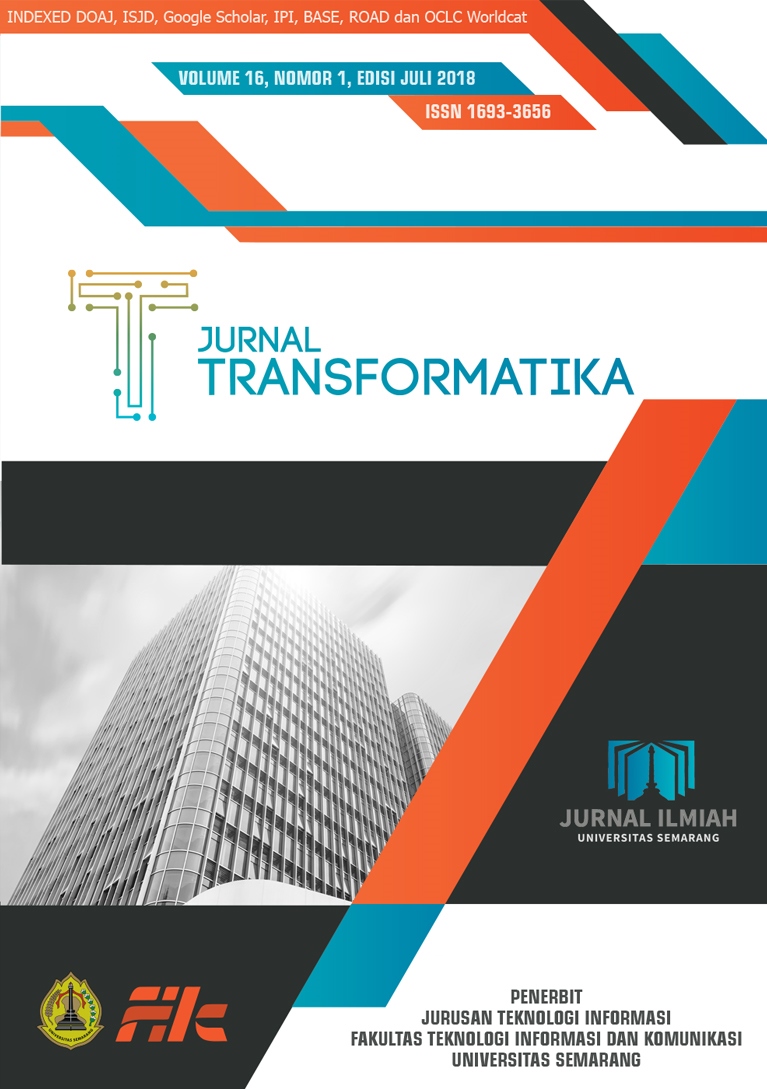Location Based Service for improving Chabot Disaster Management Evacuator Palu
DOI:
https://doi.org/10.26623/transformatika.v18i1.1890Keywords:
Location Based Service, Chatbot, Disaster Management, Artificial Intelligent, Geographic Information SystemAbstract
The devastating earthquake that struck Palu on the island of Sulawesi last September ripped through the Earth's crust at a rare high speed, scientists have found. When the disaster is over, many natural disaster victims need immediate help. The call center provided is usually busy with services and complaints from victims of natural disasters. The greater the impact of natural disasters, the more information services that must be carried out. By using CEPAT chatbot for disaster evacuation in Palu, information about evacuation place can be given to victim by access it. Then when the victim shares their location, CEPAT will give the nearest evacuation place information using LBS improvement Chabot.References
F. Wex, G. Schryen, S. Feuerriegel, and D. Neumann, Emergency response in natural disaster management: Allocation and scheduling of rescue units, Eur. J. Oper. Res., vol. 235, no. 3, pp. 697 708, 2014.
V. Nomor and A. D. A. N. Penanggulangan, The indonesian journal of politics and policy (ijpp), vol. 1, pp. 83 93, 2019.
R. A. Hadiguna, I. Kamil, A. Delati, and R. Reed, Implementing a web-based decision support system for disaster logistics: A case study of an evacuation location assessment for Indonesia, Int. J. Disaster Risk Reduct., vol. 9, pp. 38 47, 2014.
I. S. Wekke, Z. Sabara, M. A. Samad, A. Yani, R. Umam, and M. U. Palu, EARTHQUAKE , TSUNAMI , AND SOCIETY COOPERATION : EARLY FINDINGS IN PALU POST OF INDONESIA DISASTER.
PETA PERSEBARAN TITIK KUMPUL GEMPA TSUNAMI PALU, DONGGALA 2018. [Online]. Available: http://ugm.id/PetaBencanaPalu2018.
M. Saadatseresht, A. Mansourian, and M. Taleai, Evacuation planning using multiobjective evolutionary optimization approach, Eur. J. Oper. Res., vol. 198, no. 1, pp. 305 314, 2009.
M. Dong, H. Li, K. Ota, L. T. Yang, and H. Zhu, Multicloud-Based Evacuation Services for Emergency Management, IEEE Cloud Comput., vol. 1, no. 4, pp. 50 59, 2014.
O. Alani, Z. Alazawi, R. Mehmood, S. Altowaijri, and M. B. Abdljabar, A smart disaster management system for future cities, pp. 1 10, 2014.
S. Cresci, M. Tesconi, A. Cimino, and F. Dell Orletta, A Linguistically-driven Approach to Cross-Event Damage Assessment of Natural Disasters from Social Media Messages, pp. 1195 1200, 2016.
M. Imran, P. Mitra, and C. Castillo, Twitter as a Lifeline: Human-annotated Twitter Corpora for NLP of Crisis-related Messages, 2016.
G. Shalunts, G. Backfried, and K. Prinz, Sentiment Analysis of German Social Media Data for Natural Disasters, 11th Int. Conf. Inf. Syst. Cris. Response Manag., no. May, pp. 752 756, 2014.
D. Buscaldi and I. Hern ¡ndez-Farias, Sentiment Analysis on Microblogs for Natural Disasters Management: a Study on the 2014 Genoa Floodings, Proc. 24th Int. Conf. World Wide Web, pp. 1185 1188, 2015.
C. Cobb et al., Designing for the deluge: Understanding & Supporting the Distributed, Collaborative Work of Crisis Volunteers, Proc. 17th ACM Conf. Comput. Support. Coop. Work Soc. Comput. - CSCW 14, pp. 888 899, 2014.
I. Akg ¼n, F. G ¼m ¼ÅŸbuÄŸa, and B. Tansel, Risk based facility location by using fault tree analysis in disaster management, Omega (United Kingdom), 2015.
R. Khudabadi, A Recent Study on Early Disaster Warning & Evacuation System on Mobile Phones Using Google Cloud, vol. 02, pp. 501 503, 2015.
P. Debnath, S. Haque, S. Bandyopadhyay, and S. Roy, Post-disaster situational analysis from WhatsApp group chats of emergency response providers, Proc. Int. ISCRAM Conf., no. May, 2016.
D. Dutta, Developing an Intelligent Chat-bot Tool to assist high school students for learning general knowledge subjects, p. 13, 2017.
Downloads
Published
Issue
Section
License
Authors who publish with this journal agree to the following terms:
- Authors retain copyright and grant the journal right of first publication with the work simultaneously licensed under a Creative Commons Attribution License that allows others to share the work with an acknowledgement of the work's authorship and initial publication in this journal.
- Authors are able to enter into separate, additional contractual arrangements for the non-exclusive distribution of the journal's published version of the work (e.g., post it to an institutional repository or publish it in a book), with an acknowledgement of its initial publication in this journal.
- Authors are permitted and encouraged to post their work online (e.g., in institutional repositories or on their website) prior to and during the submission process, as it can lead to productive exchanges, as well as earlier and greater citation of published work.

Transformatika is licensed under a Creative Commons Attribution 4.0 International License.


